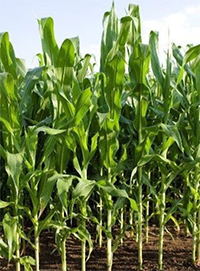
Can the effects of nitrifying bacteria be reduced?
Nitrosomonas bacteria converts stable ammonium-nitrogen into unstable nitrate-nitrogen through the process of nitrification. Optinyte™ technology, found in Instinct® and N-Serve® nitrogen stabilizers, slows that conversion by suppressing the population of Nitrosomonas bacteria present in the soil. It has a bacteriostatic effect on Nitrosomonas, meaning that it inhibits the activity of the bacteria, rather than killing it. Instinct and N-Serve are scientifically proven to keep nitrogen in the root zone and reduce leaching of nitrates into groundwater by keeping the ammonium form of nitrogen available longer, ready for crop intake.
How does Optinyte™ technology work?
Optinyte™ technology, the innovative chemistry that powers both Instinct® and N-Serve® nitrogen stabilizers, works with spring- and fall-applied nitrogen fertilizer applications to help farmers increase yield in an environmentally sustainable way.
When used within a nitrogen fertilizer program, Optinyte technology keeps the nitrogen in the stable ammonium form and delays conversion to nitrate — which keeps the fertilizer nitrogen in the plant root zone for a longer period. As a result, Instinct and N-Serve extend nitrogen availability for up to eight weeks with spring applications, so crops get needed nitrogen during critical growth stages.
The technology also works with fall-applied nitrogen to extend nitrogen availability an extra 90 days when soil temperatures are above 40° F. On average, that is about late May to early June, when spring rainfall creates conditions conducive for nitrogen loss.
What results has Optinyte™ technology produced?
The active ingredient in Instinct® and N-Serve® nitrogen stabilizers has been proven to decrease leaching by 16%1; increase soil nitrogen retention by 28%1; and increase crop yield by 7%1. Nitrogen stabilizers with Optinyte™ technology have been extensively tested for more than 40 years and in more than 25 countries. In 158 studies, there was a consistent benefit of nitrogen stabilizer use in conjunction with nitrogen fertilization.1
Does Optinyte™ technology reduce greenhouse gas emissions?
The exclusive Optinyte™ technology found in Instinct® and N-Serve® nitrogen stabilizers reduces denitrification and the escape of greenhouse gases into the atmosphere by as much as 51%.2
How does a spring or fall nitrogen stabilizer application with Optinyte™ technology benefit crops?
In the United States, Climate Corp.3 demonstrated that nitrogen stabilizers, such as Instinct® and N-Serve® nitrogen stabilizers with Optinyte™ technology, were beneficial to the nitrogen status 97% of the time, when applied in fall; and in the spring, it was proven to be beneficial 90% of the time.
Has Optinyte™ technology been recognized for its environmental impact?
Instinct® nitrogen stabilizer and Optinyte™ technology were awarded the 2016 U.S. EPA Presidential Green Chemistry Challenge Award. Instinct microcapsule nitrogen stabilizer with Optinyte™ technology maximizes nitrogen fertilizer applications, benefitting both the crop and environment. Optinyte technology is the power behind Instinct and N-Serve® nitrogen stabilizers that contain the active ingredient nitrapyrin. When used within a nitrogen fertilizer program, Optinyte keeps the nitrogen in the stable ammonium form and delays conversion to nitrate — keeping the fertilizer nitrogen in the plant root zone for a longer period.
Nitrogen fertilizer is one of your biggest investments, so you want to make sure you’re getting the maximum from it. With Instinct and N-Serve, powered with Optinyte technology, everybody wins, including the environment.
1Raun, Johnson 1999, Glass 2003.
2Wolt, J.D. 2004. A meta-evaluation of nitrapyrin agronomic and environmental effectiveness with emphasis on corn production in the Midwestern USA. Nutr. Cycl. Agroecosyst. 69:23-41. Doi: IO 1023/B: FRES.0000025287.52565.99.
3Climate Corp. https://www.climate.com
Instinct is not registered for sale or use in all states. Contact your state pesticide regulatory agency to determine if a product is registered for sale or use in your state. Federal law does not require any person who applies or supervises the use of Instinct to be certified in accordance with EPA regulations and state, territorial and tribal laws. Some states may have additional requirements related to liquid manure and nitrogen stabilizers. Be sure to consult your state or local Extension service to understand your requirements. When applying Instinct to deep pits, appropriate manure agitation safety steps should be followed. Instinct should be applied directly to the deep pit prior to pumping the pit; a thorough agitation system must be operating in order to evenly distribute Instinct within the deep pit; applicators and handlers of Instinct and manure treated with Instinct are required to use proper protective equipment as stated on the product label; air ventilation systems must be operational inside barns. Do not fall-apply anhydrous ammonia south of Highway 16 in the state of Illinois. Always read and follow label directions.
The More You Grow
Find expert insights on agronomics, crop protection, farm operations and more.